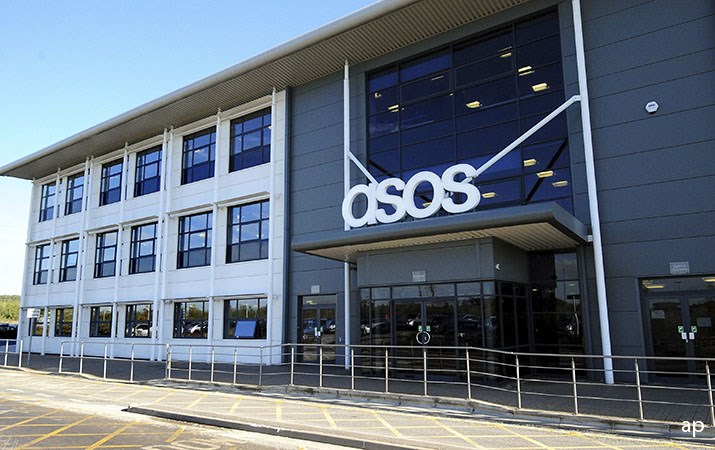
ASOS (ASC) on Monday revealed chief executive Nick Beighton will leave the online clothing retailer as part of a board shake-up, with the firm's annual results also showing a profit hike.
However, the fast fashion firm warned on profit in the year ahead due to cost pressures, the falling away of Covid-19-related tailwinds and supply chain issues.
Shares in ASOS were down nearly 15% at £23.73 in London early afternoon on Monday. The stock has fallen 50% so far in 2021.
Revenue for the financial year to August 31 jumped 20% to £3.91 billion from £3.26 billion the previous year. Retail sales grew 19% to £3.78 billion, while pretax profit rose 25% to £177.1 million from £142.1 million the year before.
However, sales growth in the year ahead is expected to be in the range of 10% to 15%, with interim revenue growth in "mid-single digits", reflecting tougher comparables and industry-wide supply chain pressures.
ASOS expects sales to accelerate in the second half of the year and has laid out plans to generate £7 billion of annual revenue over the medium-term. A normalised returns rate is expected for financial year 2022.
Adjusted pretax profit for the 2022 financial year is expected between around £110 million to £140 million. This would be well below the £193.6 million registered for the financial year just ended.
Supply Chain Costs
ASOS flagged "notable cost headwinds", including inbound freight costs, Brexit duty annualisation, outbound delivery costs and labour cost inflation as factors limiting growth. It also said financial 2021 adjusted profit included a Covid-19-related tailwind of £67.3 million, driven by lower returns rates.
"Looking ahead, while our performance in the next 12 months is likely to be constrained by demand volatility and global supply chain and cost pressures, we are confident in our ability to capture the sizeable opportunities ahead," said chief financial officer and chief operating officer Mat Dunn.
ASOS shook up its board to "underpin delivery of the next phase of its global growth strategy". Chief executive Beighton is stepping down after 12 years with ASOS, including six as CEO, a search is underway for his replacement.
Chief financial officer Dunn has added the chief operating officer role and will run day-to-day operations, effective immediately. Katy Mecklenburgh, currently director of group finance, has become interim chief financial officer.
Chair Adam Crozier, whose decision to step down was previously announced, will be succeeded by Senior Independent Non-Executive Director Ian Dyson. Dyson will depart from his non-executive role at SSP Group.
"Over the last three years we have made significant progress...At the same time, however, we recognise that there is more to do to accelerate the pace and intensity of commercial execution," said Crozier.
The Morningstar View
After the firm's interim results in April, Morningstar analysts retained their fair value estimate of £40.40 for ASOS's shares, significantly above the current market price. Jelena Sokolova said:
"The company is planning to boost logistics capacity to be able to deliver £6 billion in revenue by the second half of fiscal 2023 (we expect over £6 billion in sales in 2024). ASOS also is planning to enhance stock availability through partner fulfillment, where inventory is supplied by brands directly while ASOS charges commissions on sales; the rollout is expected to start at the end of calendar year.
"This should help expand product availability without additional inventory risk and has already been implemented by ASOS’ bigger peer Zalando (which has a goal of 50% of gross merchandise value to be supplied by partners by 2025). It also could provide higher profitability once scaled compared with the traditional wholesale business. All in, we view this shift positively."
While ASOS has no economic moat, it is in a strong position to attain one. "ASOS is a leading European e-commerce player in fashion and cosmetics focusing on the 20-something-year-old demographic segment, she adds. "It offers more than 85,000 products on its website from its own label and around 950 third-party brand partners. We believe that through its wide reach (over 20 million active users globally with over 10% of population reach in its home United Kingdom market), ASOS benefits from traces of network, cost, and intangible asset advantages."
"Although we don’t believe those advantages are strong enough to warrant a moat currently, we expect the network effect and intangible asset advantages to strengthen over time as more customer traffic data is accumulated and better analytics allow improve conversion rates and customer loyalty; thus we grant Asos a positive moat trend rating."




























